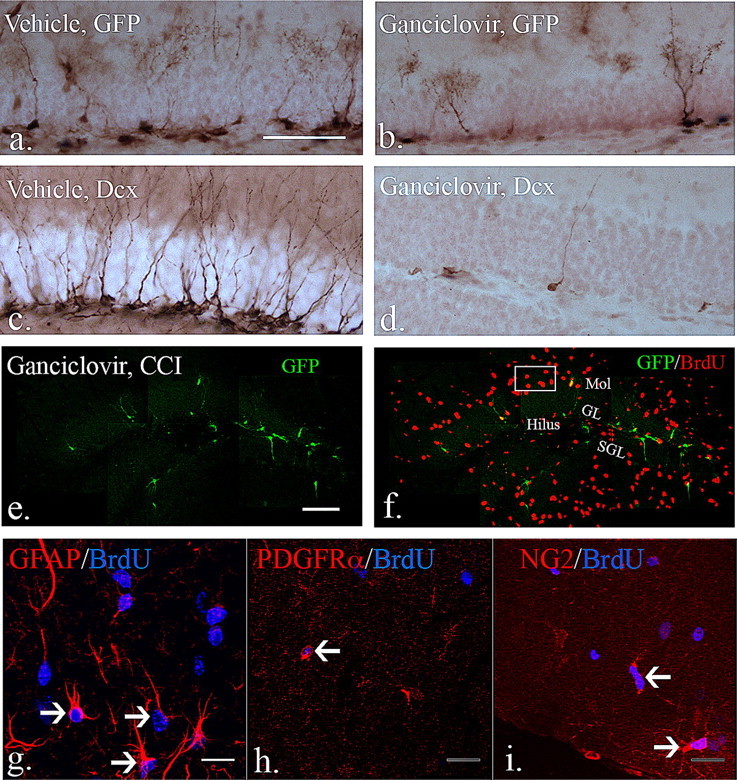Figure 7.

The effects of ganciclovir treatment in eGFP-expressing early neural progenitors. a, b, Compared with mice treated with vehicle for 4 weeks, the number of eGFP-expressing cells in the dentate gyrus decreased significantly after 4 week treatment with ganciclovir (vehicle vs ganciclovir: 33,530 ± 7636 vs 9061 ± 937, mean ± SEM; p < 0.05 with unpaired Student's t test, N = 3 each group). c, d, DCX-expressing cells were profoundly depleted (by over 90%) in the dentate gyrus after 4 week ganciclovir treatment compared with vehicle-treated animals (vehicle vs ganciclovir: 38,731 ± 9230 vs 2624 ± 920; p < 0.01 with unpaired Student's t test, N = 3 each group). e, f, After injury and during continuous ganciclovir treatment, there remain diminished numbers of GFP-expressing progenitors (e), but large numbers of dividing cells that express BrdU (f). (g–i are from representative boxed area from f). To determine whether ganciclovir treatment affects dividing reactive astrocytes and OPCs after injury, a total of 3 injections of BrdU were given 3, 4 and 5 d after injury while ganciclovir treatment persisted. g, BrdU/GFAP-positive and hypertrophic reactive astrocytes were observed in the molecular layers and hilus in the dentate gyrus (arrows). h, i, By using the PDGFα receptor and NG2 as markers for OPCs, BrdU-positive OPCs were observed in the dentate gyrus in the injured brain (arrows). Thus, ganciclovir treatment did not affect dividing reactive astrocytes and OPCs in the dentate gyrus in the injured brains. Scale bars, (a) 50 μm, (e) 100 μm, and (g) 20 μm. Mol, Molecular layer; SGL, subgranular layer; GL, granular layer.
